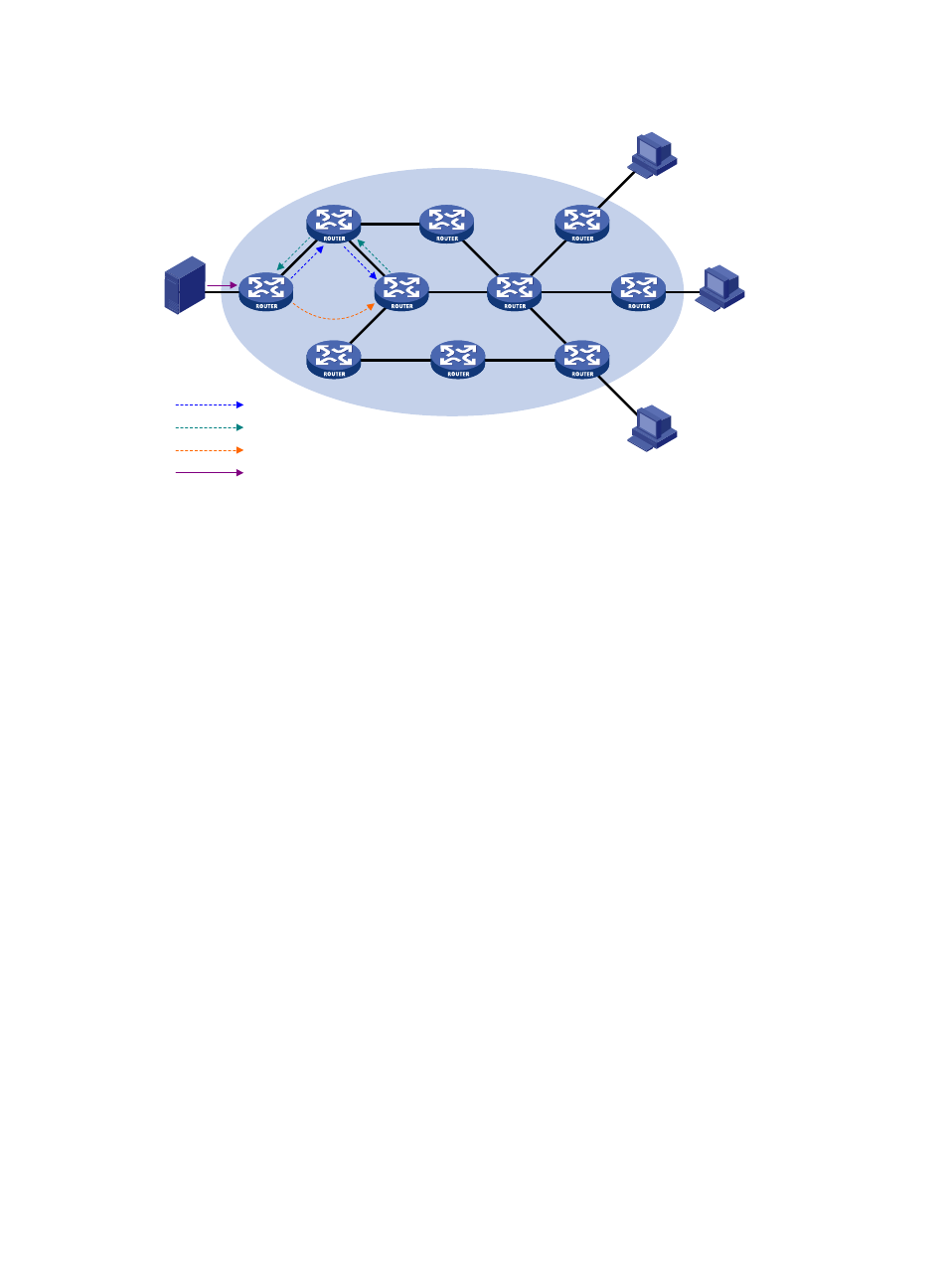Switchover to spt, Configuring static ports – H3C Technologies H3C S12500-X Series Switches User Manual
Page 162

152
Figure 49 IPv6 multicast source registration
As shown in
, the IPv6 multicast source registers with the RP as follows:
1.
The IPv6 multicast source S sends the first multicast packet to the IPv6 multicast group G. When
receiving the multicast packet, the source-side DR that directly connects to the IPv6 multicast source
encapsulates the packet in a register message and unicasts the message to the RP.
2.
After the RP receives the register message, it decapsulates it and forwards it down to the RPT.
Meanwhile, it sends an (S, G) source-specific join message hop by hop toward the IPv6 multicast
source. The routers along the path from the RP to the IPv6 multicast source constitute an SPT branch,
and each router on this branch creates an (S, G) entry in its forwarding table.
3.
The subsequent IPv6 multicast data from the IPv6 multicast source are forwarded to the RP along
the established SPT. When the IPv6 multicast data reaches the RP along the SPT, the RP forwards
the data to the receivers along the RPT. Meanwhile, it unicasts a register-stop message to the
source-side DR to prevent the DR from unnecessarily encapsulating the data.
Switchover to SPT
In an IPv6 PIM-SM domain, only one RP and one RPT provide services for a specific IPv6 multicast group.
Before the switchover to SPT occurs, the source-side DR encapsulates all IPv6 multicast data addressed to
the IPv6 multicast group in register messages and sends them to the RP. After receiving these register
messages, the RP decapsulates them and forwards them to the receivers-side DR along the RPT.
Switchover to SPT has the following weaknesses:
•
Encapsulation and decapsulation are complex on the source-side DR and the RP.
•
The path for an IPv6 multicast packet might not be the shortest one.
•
The RP might be overloaded by IPv6 multicast traffic bursts.
To eliminate these weaknesses, IPv6 PIM-SM allows an RP or the receiver-side DR to initiate a switchover
to SPT:
•
The RP initiates a switchover to SPT:
After receiving the first (S, G) multicast packet, the RP sends an (S, G) source-specific join message
toward the IPv6 multicast source immediately. The routers along the path from the RP to the IPv6
Source
Server
Host A
Host B
Host C
Receiver
Receiver
IPv6 multicast packets
SPT
Join message
Register message
RP
DR
- H3C S9800 Series Switches H3C S5560 Series Switches H3C S5130 Series Switches H3C S5120 Series Switches H3C S12500 Series Switches H3C SR8800 H3C SR6600-X H3C SR6600 H3C WX6000 Series Access Controllers H3C WX5000 Series Access Controllers H3C WX3000 Series Unified Switches H3C LSWM1WCM10 Access Controller Module H3C LSWM1WCM20 Access Controller Module H3C LSQM1WCMB0 Access Controller Module H3C LSRM1WCM2A1 Access Controller Module H3C LSBM1WCM2A0 Access Controller Module
